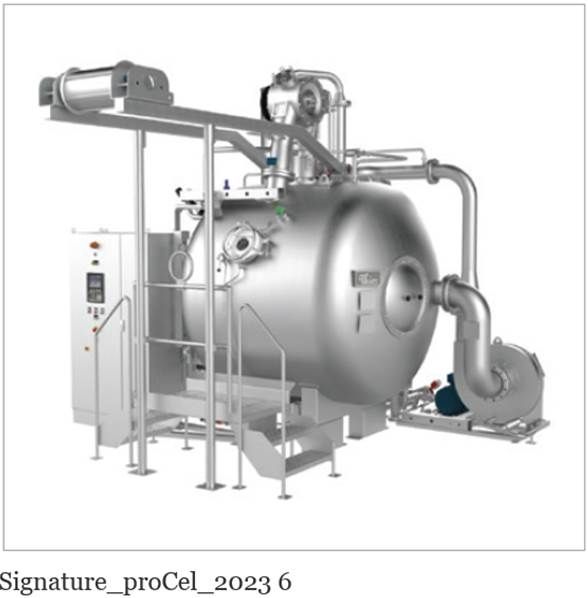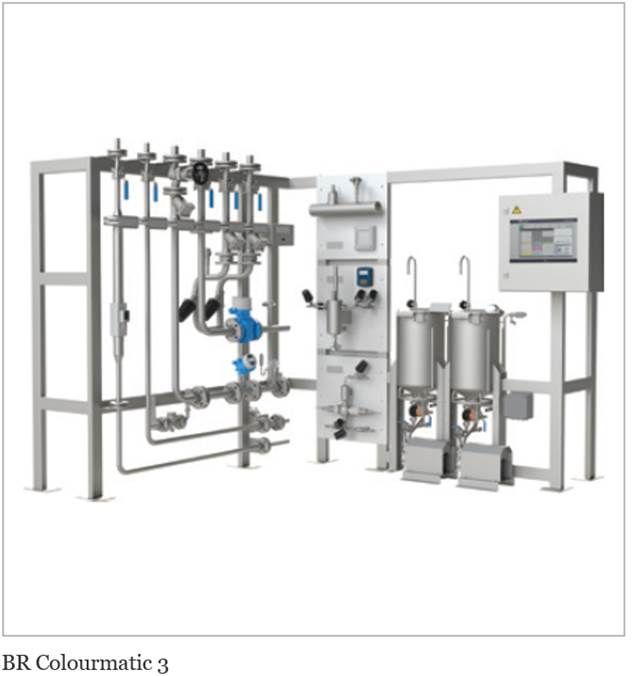For Thies, this year’s ITMA Asia is characterised by today’s mega trends – transition now, transparency, digitalisation, automation and the circular economy. From November 19th to 23rd, the Thies team is happy to welcome you in Hall H5, booth D30. The company invites you to engage in thought-provoking conversations, to share with us your biggest challenges, and to assess our technological breakthroughs.
Transition Now

Thies is offering a new machine series – Signature Series, opening a new chapter in fabric colouration. With its novel ability to precisely dose concentrated chemistries and flexibly use less water to transport fabric, the Signature Series is capable of delivering highly consistent results with liquor ratios starting at 1:2.3 litre of water per 1 kg of fabric. Proven in bulk production, water consumption is tremendously reduced, dyeing uniformity is improved, and batch times are shorter.
Signature’s ultra-low liquor ratio has further multiple cost and environmental benefits. Dye consumption is reduced up to 20 per cent while achieving the same shade, less energy is required for heating water, and the treatment of water is less costly because the total dissolved solids (TDS) is reduced up to 50 per cent. Unlike pad or spray dyeing, with Signature there is no need to have separate machines for washing, bleaching and dyeing because nearly all wet treatments can be carried out on this single machine.
There is no intermediate handling and drying, and there is no end-to-end variation associated with wet-on-wet pad-bath dilution. Colour uniformity is improved over pad dyeing because fabric passes through the nozzle 60 times versus a single nip, and there is no side-centre-side variation caused by pad roll wear or crowning. A wide array of fibre types and fabric structures can be successfully processed, including woven fabrics, warp knits, spacers, and circular knits. In short, the Signature Series has the proven advantages of batch dyeing while competing with the low liquor ratio of single-pass applications. The ease with which Signature technology fits into existing production lines means payback on investment starts on day one.
Transparency and Digitalisation
The first steps toward making dyeing a more comprehendible science are measurement and analysis. Thies offers several tools for digitalisation, reporting, and process control. Energy Control, pH-control, conductivity measurement, and DyeControl are tools for optimising recipes and process settings. Visual representations of the process curves enable both a control of the turbidity and a determination of the dye extract from the liquor. By measuring the process and providing intuitive reports that aid decision-making, Thies makes dyeing less art and more science.
Automation

The need for automation is ever-growing, and its advantages are diverse. Automation offers (1) increased productivity through reduction of wait times, (2) stable quality, (3) improved occupational safety, (4) a more inviting workplace, and (5) freedom from constraints caused by labour shortages.
An automated storage, weighing and dispensing system for dyestuffs and/or auxiliary chemicals comes with many advantages:
• Workers no longer have routine contact with chemicals and dyes during weighing, transportation, dispensing, and dosing.
• Tasks that do not add value are eliminated, and the workplace is safer. The dangers of falling or spilling chemicals and dyes are minimised, protecting workers and the environment from harm.
• The digital storage system manages the exact stock levels and generates order proposals if the stock falls below the defined safety level.
• A supervisory production planning system, centrally hosted, controls the process organisation of the complete dye house by bidirectional communication. The MPS (Multi Product Supply) systems monitor the delivery destinations (tanks). The synchronisation ensures an optimal process and production sequence. MPS systems integrate themselves seamlessly into the concept of a future-oriented, efficient dye house, delivering large increases in productivity and quality.
At the same time, the automatic weighing, dissolving and provision of dyes and chemicals leads to increased dyeing quality results, maximum reproducibility, savings of human resources, significantly increased occupational and environmental safety, as well as optimised consumption of products.
Today, there are solutions for smaller dye houses that work self-sufficiently, and modularity offers a manageable, affordable, step-wise improvement for larger dye houses.
Circular Economy
Wastewater and its thermal energy are valuable resources. Thies has an ozone system in its portfolio that can be used to decolorise coloured wastewater. The use of active oxygen splits the organic and inorganic impurities. The oxidised dye molecules become colourless. The result is a colourless solution which can be recycled for reuse in the process.
Heated wastewater is a regenerative energy source. Transferring its energy to cold water reduces primary energy consumption as well as CO2 emissions. The use of Thies’ intelligent heat recovery systems enables a significant reduction in production costs and makes a major contribution to efficient, clean and energy-saving production.
For further details, please visit our website www.thiestextilmaschinen.de, our Social Media Account at LinkedIn www.linkedin.com/company/thies-gmbh-&-co-kg or contact us via e-mail sales@thies.group.





20240924091633.png)
_Big.jpg)





Comments